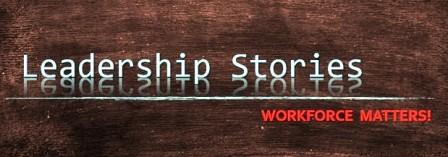
Leadership Stories: Workforce Matters

Today there’s much focus and discussion on the importance of data-driven decision making from using predictive analytics to leveraging the promise of AI. We see this in both private and public sectors. In the private sector, it tends to focus on making the “numbers” for stockholders and Wall Street. In the public sector, and in particular, government the key focus is on meeting mission outcomes and using evidence to do just that.
Every successful leader recognizes the critical value of collecting relevant data and real evidence, and using them to make decisions. Sometimes when the pressure is on it becomes prevalent to concentrate on the part of leadership where you accomplish the mission and make your numbers, but lose your focus on who makes these achievements possible: YOUR PEOPLE!
In the aftermath of the recent U.S. government shutdown, the government agency leaders back to work meeting their missions should go the extra mile and focus on the needs of their workforce like never before. In fact, a recent report by the Senior Executives Association puts a finer point on the drastic consequences of ignoring the needs of the federal workforce, which puts the nation at risk. The animating question of the SEA study, Are Declines in U.S. Federal Workforce Capabilities Putting Our Government at Risk of Failing?, is: Has the U.S. federal government reached a point where critical operations might fail in stressful events that are likely to occur? According to SEA, it appears the answer to this critical question is yes.
The study outlines a host of issues that are impacting the federal government’s capabilities, (and no doubt only exacerbated in the wake of the 35 day shutdown): low morale, vacancies, and difficulties in hiring and retention. The study has established that the U.S. federal government and its workforce are in an unprecedented condition. If these workforce issues are ignored, then federal agencies may lack the capacity and capabilities needed to actually meet mission outcomes.
At the very least, successful government leaders need to focus on two interconnected paths going forward:
- Develop people: Leadership today transcends titles. It is about serving effectively the needs of stakeholders — the most important ones being the people who make things work. Leaders, in this world, have to model the behaviors they seek, help people in building their skills while designing work that taps into nascent potential and most importantly, lead through their influence and not simply through authority. The most significant charge of today’s government leaders is to build a pipeline of up incoming leaders. The importance of this task, especially today, cannot be overstated.
- Design for the future: Today’s government leaders are also architects of how government will operate in the future. They are responsible for envisioning, shaping, and safeguarding the future, creating clarity amidst uncertainty. This is no small feat and it is made increasingly difficult in the 21st century where rapid, unforeseen change seems to be the only constant. Leaders do so by building infrastructure, methods, and processes that will help their agencies prepare for and anticipate the future. Integral to designing the future government is building a workforce that has the right skills, a shared purpose, and the capacity to grow and change as new demands are made and unexpected paths are charted.



